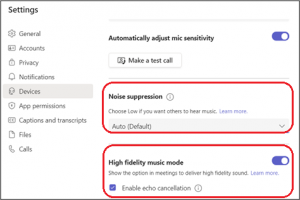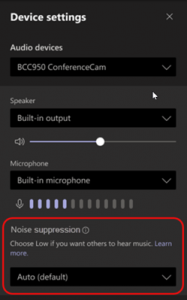
Have you ever been on a Teams call or meeting and experienced an echo in your conversation or meeting discussions?
Given the fact that the hybrid workplace is here to stay and that its reliance on communication platforms such as Teams to conduct conversations and meetings will continue to make call quality and meeting discussions a key requirement for collaboration users.
Microsoft is aware of this need and recently announced it is using machine-learning models to further improve the audio functionality in Teams, including the ability for users to speak and hear simultaneously without interruptions. This push is using AI to recognize the difference between the sound from a speaker and a user's voice in calls and meetings. Teams will also use a machine-learning model to convert captured audio signals to sound – resulting in less reverberation, which can cause users to sound like they are speaking in a cave.
Teams offers noise suppression and echo cancellation options in its Settings menu with the following features explained below:

- Auto (Default): The Teams app decides the best level of noise suppression based on local noise.
- High: Suppresses all background sound that isn't speech (uses more computer resources).
- Low: Suppresses low levels of persistent background noise, such as a computer fan or air conditioner. (Use this setting if you want others to hear music).
- Off: Noise suppression is disabled. (Use this setting for high-fidelity microphones in low noise environments).
Teams also offers these same noise suppression options from within the Meetings Device settings control menu as shown below:

So watch for continued improvements in echo cancellation, speech interruptions, and sound reverberations as Teams will be rolling these out for users on Windows and Mac devices as well as mobile platforms.
We offer training for a variety of Microsoft Office & Microsoft 365 applications—including Teams! Contact us to get started on your training today. Microsoft is aware of this need and recently announced it is using machine-learning models to further improve the audio functionality in Teams, including the ability for users to speak and hear simultaneously without interruptions.


